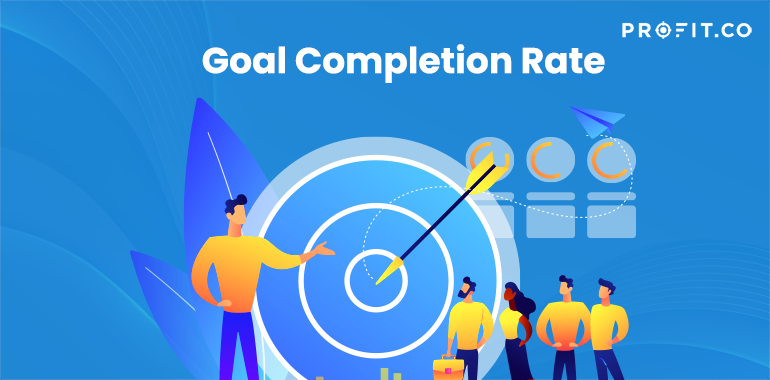Utilizing digital marketing metrics is highly recommended for assessing your campaign’s effectiveness. And the goal completion rate makes no exception to the rule, whatsoever. Each entrepreneur should acknowledge that the business world is continually changing – which is why your strategies should be updated accordingly; otherwise, they won’t generate the results you’re looking for.
A Closer Look at the Goal Completion Rate
More specifically, the goal completion rate (GCR) metric assesses the number of people who carried out a specific marketing goal. This could refer to subscribing to a mailing list or signing up for a trial, among other things.
Marketing metrics, such as the goal completion rate, are really insightful for marketers and entrepreneurs. That’s because they deduct your conversions rates by investigating the awareness stage of the consideration stage.
In plain English, for a more expansive overview of where your business is standing, it is highly recommended to pair the goal completion rate with other KPIs. For example, the lead to win rate facilitates an indicator concerning the quality of the leads. In other words: what types of leads do your marketing approaches generate?
Typically, the goal completion rate is used expressly in relation to website optimization, as well as A/B testing (also referred to as split tests). That’s primarily because GCR represents a reliable indicator regarding the way in which your website resonates with your target audience – if it does resonate, of course.
Usually, content strategists and marketers convey the wide GCR value as the baseline value for comparing all the pages of your website. To that end, the pages whose rating is below the threshold would necessitate optimization and improvements. In the meantime, the pages whose threshold is above should be investigated. That is to say, you ought to pinpoint the approaches that were most successful and attempt to implement them in each page.
Other Noteworthy Guidelines
Of course, you ought to establish a range of realistic goals and objectives that are relevant to your industry and business. Without a specific goal in mind, you cannot determine if you’ve been successful or not – right? For instance, a marketing objective might be having a specific number of people subscribe to your mail list. Afterward, you should analyze the number of leads in contrast with the target.
Essentially, a high goal completion rate is a good sign. It merely indicates that your campaign is efficient, in the sense that it encourages visitors to turn into buyers, thus, maximizing the number of leads. A successful campaign compels visitors to take action. At the same time, a high goal completion rate highlights that your sales team has managed to obtain highly qualified leads for your industry.
On a final note, it’s mandatory to remember that each campaign should have individual goals. This is why each campaign should be analyzed from different viewpoints beforehand, to know what you expect from it.
At the same time, the benchmarks for the goal completion rates depend on your industry, among other things. In order to assess the connection between results and objectives, make sure you also consider measuring the return on marketing investment, aside from the goal completion rate.
